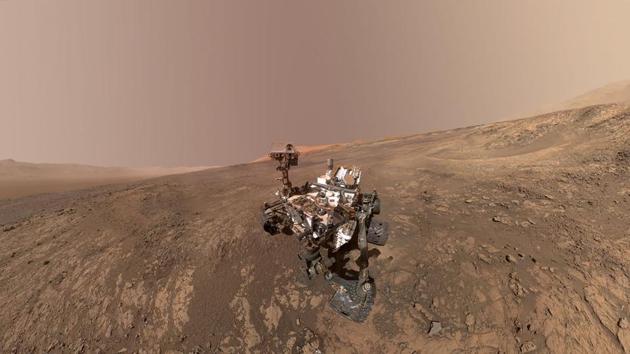NASA to send its first-ever mission to study deep interiors of Mars
NASA’s Interior Exploration using Seismic Investigations, Geodesy and Heat Transport (InSight) -- a stationary lander -- will be dedicated to explore Mars’ deep interior.
In a bid to study the deep interior of the Red Planet and find traces of how it was formed, NASA is all set to send a first-ever such mission to Mars.

Scheduled to launch on May 5, NASA’s Interior Exploration using Seismic Investigations, Geodesy and Heat Transport (InSight) -- a stationary lander -- will be dedicated to explore Mars’ deep interior.
It also will be the first NASA mission since the Apollo moon landings to place a seismometer, a device that measures quakes, on the soil of another planet, the US space agency said in a statement on Friday.
Bruce Banerdt is the principal investigator for InSight at the Jet Propulsion Laboratory (JPL) in Pasadena, California.
“In some ways, InSight is like a scientific time machine that will bring back information about the earliest stages of Mars’ formation 4.5 billion years ago,” Banerdt said.
“It will help us learn how rocky bodies form, including Earth, its moon, and even planets in other solar systems,” he added.
InSight carries a suite of sensitive instruments to gather data and, unlike a rover mission, these instruments require a stationary lander from which they can carefully be placed on and below the Martian surface.
Looking deep into Mars will let scientists understand how different its crust, mantle and core are from Earth.
Several European partners have contributed instruments and key components to the InSight mission.
France’s Centre National d’Etudes Spatiales led a multinational team that built an ultra-sensitive seismometer for detecting marsquakes.
The German Aerospace Centre (DLR) developed a thermal probe that can bury itself up to 16 feet underground and measure heat flowing from inside the planet.
“InSight is a truly international space mission,” said Tom Hoffman, project manager at JPL.
“Our partners have delivered incredibly capable instruments that will make it possible to gather unique science after we land,” he added.
InSight currently is at Vandenberg Air Force Base in California undergoing final preparation before launch.
In April, the spacecraft will be mounted to its rocket, connections between them will be checked and the launch team will go through a final training.
“This next month will be exciting,” Banerdt said. “We’ve got some final work to do, but we’re almost ready to go to Mars.”






